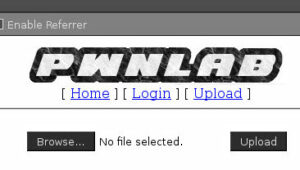While this walk-through looks fairly strait forward it was not in reality. There were a lot of dead-ends and attempts that didn’t work, or didn’t give me the results I wanted. Once I found the correct path though, it took only a few minutes to walk through it again and document it with screen shots.
If you have not had a chance to complete the PwnLab:Init challenge on VulnHub STOP READING NOW. This is a fun challenge and I recommend you try it.



